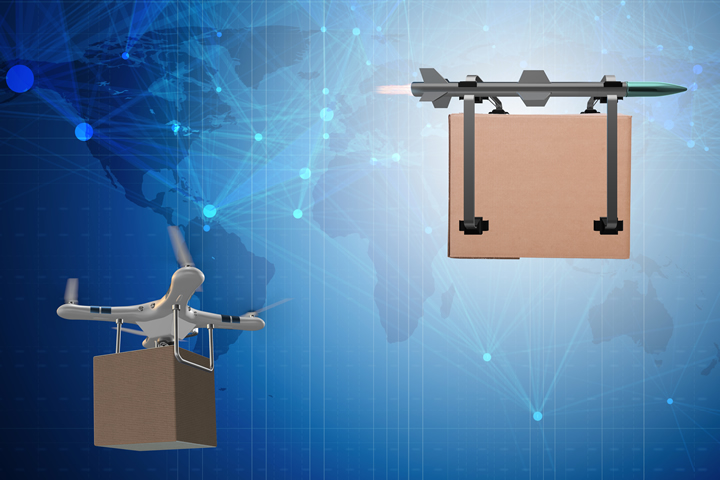The Developing Role of Drones In Manufacturing

It’s easy to mistake drones for glorified cameras, especially since many applications rely on the aerial photography and videography technology built into most unmanned vehicles. However, modern drones can do so much more. That’s precisely why we’re seeing them adopted by various industries and used in relatively unique and innovative ways.
Consider how they’re being put to good use in manufacturing. There are many ways these resourceful devices can improve operations as they develop new roles in the industry. They are beneficial due to their remote-operated nature, not just in terms of surveillance.
To understand just how important they’ve become, it makes sense to explore some of the ways they’re being used now and how they might evolve.
Air, Land and Sea
The global drone market is estimated to be worth $7,705.8 million in 2022 and is expected to reach $17,520 million by 2028. It is also likely to be used in major industries like cargo transportation, oil and gas, agriculture, military, entertainment, manufacturing and more.
Although those numbers are massive and the field continues to grow every day, it’s vital to note that drones aren’t just airborne. They also travel on land and underwater. Manufacturing facilities exist in various environmental and operational conditions, sometimes with unique settings — like submerged machinery.
Then there are outlying operations related to manufacturing, such as materials and supply acquisition, additional support — like cooling superheated products — and more. Aerial drones aren’t the only useful form of the technology in the industry, and for good reason.
Some of the most common examples of land-based drones are those used by the military and first responders. Bomb disposal units or robots are well-known. There are also remotely operated vehicles (ROVs) and autonomous underwater vehicles (AUVs), like remotely operated submersibles.
These two types of drones are very different, but they are often used in similar ways. They can be retooled and adapted to match the needs of modern manufacturing. There’s even a drone called the SeaSearcher that can be used for treasure hunting.
Here are some ways drone technology is being applied to manufacturing.
1. Data Collection
All drones are fitted with sensors and technologies that can be leveraged to collect operational, performance and situational data. This can be done remotely and often autonomously, as drones can be programmed to follow a specific route.
This allows drones to take temperatures, address or identify safety concerns, and inspect machinery. Think of them as an eye in the sky.
2. Transport
It’s no secret that Amazon is testing drone delivery for local package drop-offs. While it is largely a logistics and retail company, the same applications can be used in manufacturing. Drones can move heavy supplies and equipment from one place to another so there’s less stress and harm to manual laborers.
They can also be used for production by delivering parts or small pieces from one line to another. Drones are also fully capable of packing, picking and inventory management.
3. Collaboration
Imagine a worker doing a complex task who needs support from a supervisor or team member elsewhere. A drone can help facilitate communication between these two parties by letting them see and talk to each other.
A microphone and camera are all that’s needed for basic communication, but drones can also elevate these interactions with other components. For example, they can operate an arm to make direct changes or utilize automated tools.
4. Real-Time Safety and Compliance
Keeping the factory floor safe and compliant with regulatory guidelines should not be done after the fact but at every opportunity possible. It should be a persistent endeavor, with buy-in from the entire organization. Drones can help with this, especially thanks to the sensors and cameras housed within.
They can travel along pre-chosen routes, identifying potential safety hazards, pinpointing malfunctioning machinery and logging spills. That information can be relayed to administrators, maintenance and the entire team, making workers aware there’s a spill nearby and that they should be careful.
A Smarter Workplace
Manufacturing operations must be sustainable, and while lean methodologies are commonly used to achieve that, another way to make it happen is by creating smarter, more efficient facilities. Drones, in any form, are certainly helpful in doing so, and we’re going to see them a lot more on the factory floor or in the skies above.
Comments (0)
This post does not have any comments. Be the first to leave a comment below.
Featured Product

